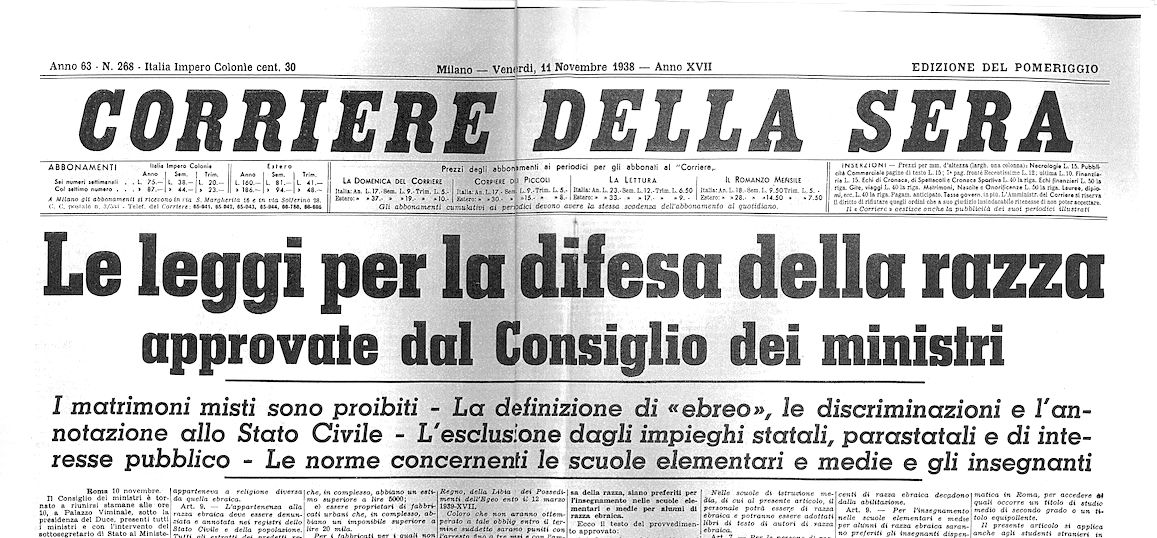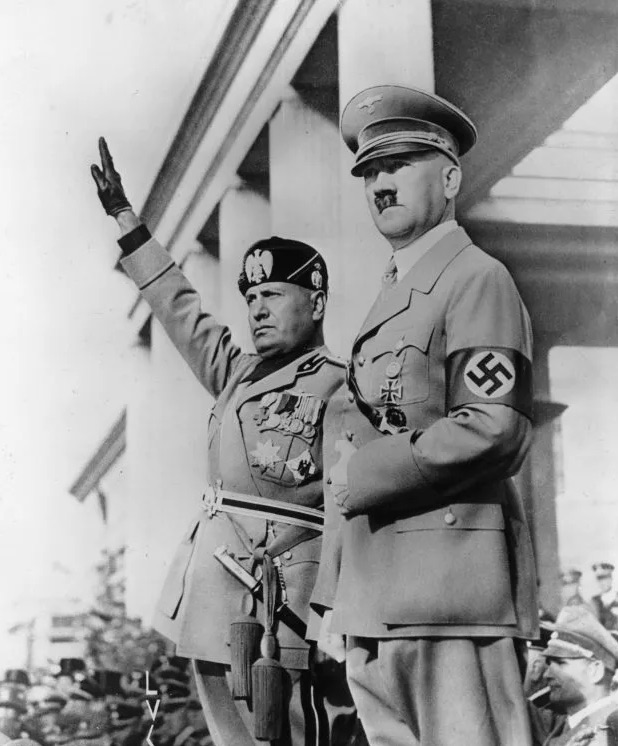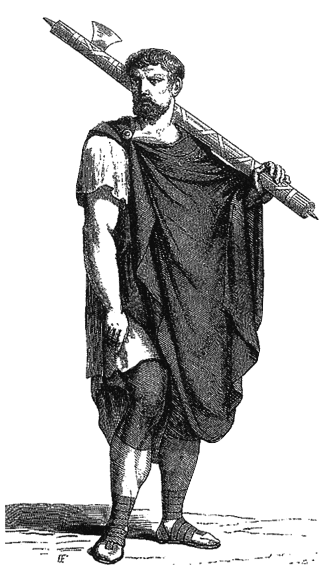
イタリアのファシズムと人種差別
Italian fascism and racism

★ファシストイタリアは、第二次世界大戦の枢軸国パートナーであるナチス ドイツとは異なり、当初は包括的な人種差別政策を持っていなかった。1938 年以降、差別と迫害は激化し、イタリアのファシストのイデオロギーと政策のますます重要な特徴となった[4]。それにもかかわらず、ムッソリーニとイタリ ア 軍は人種宣言で採択された法律を一貫して適用しなかった[5] 1943 年、ムッソリーニは、この支持を避けられた可能性があったと述べ、遺憾の意を表明した[6]。最終的に、第二次イタリア・エチオピア戦争後, イタリアのファシスト政府はエチオピアで白人と黒人の厳格な人種隔離を実施した。

Front page of the Italian newspaper
Corriere della Sera on 11 November
1938: "Le leggi per la difesa della razza approvate dal Consiglio dei
ministri" (English: "The laws for the defense of race approved by the
Council of Ministers"). On the same day, the Racial Laws entered into
force under the Italian Fascist regime, enacting the racial
discrimination and persecution of Italian Jews.[25]
1938年11月11日付イタリア紙コリエレ・デラ・セラの一面: 「Le leggi per la difesa della razza
approvate dal Consiglio dei ministri」(英語:
「閣僚会議によって承認された人種擁護のための法律」)。同日、イタリア・ファシスト政権下で人種法が施行され、イタリアのユダヤ人に対する人種差別と迫
害が制定された。
| Fascist Italy did
not initially have comprehensive racist policies unlike its World War
II Axis partner Nazi Germany. Italy's National Fascist Party leader,
Benito Mussolini, expressed different views on the subject of race over
the course of his career. In an interview conducted in 1932 at the
Palazzo di Venezia in Rome, he said "Race? It is a feeling, not a
reality: ninety-five percent, at least, is a feeling. Nothing will ever
make me believe that biologically pure races can be shown to exist
today".[1] By 1938, however, he began to actively support racist
policies in the Italian Fascist regime, as evidenced by his endorsement
of the "Manifesto of Race", the seventh point of which stated that "it
is time that Italians proclaim themselves to be openly racist",[2]
although Mussolini said that the Manifesto was endorsed "entirely for
political reasons", in deference to Nazi German wishes.[3] After 1938,
discrimination and persecution intensified and became an increasingly
important hallmark of Italian Fascist ideology and policies.[4]
Nevertheless, Mussolini and the Italian military did not consistently
apply the laws adopted in the Manifesto of Race.[5] In 1943, Mussolini
expressed regret for the endorsement, saying that it could've been
avoided.[6] After the Second Italo-Ethiopian War, the Italian Fascist
government implemented strict racial segregation between white people
and black people in Ethiopia.[7] |
ファシストイタリアは、第二次世界大戦の枢軸国パートナーであるナチス
ドイツとは異なり、当初は包括的な人種差別政策を持っていなかった。イタリア国家ファシスト党指導者ベニート・ムッソリーニは、そのキャリアを通じて人種
問題に関してさまざまな見解を表明した。1932年にローマのヴェネツィア宮殿で行われたインタビューで、彼はこう語った、「人種?
それは感情であって、現実ではない。少なくとも95パーセントは感情だ。生物学的に純粋な人種が存在するなどと私に信じさせるものは何もない」今日も存在
することを示すことができる。」[1]しかし、1938年までに、「人種宣言」を支持したことからわかるように、彼はイタリアのファシスト政権における人
種差別政策を積極的に支持し始めた。その7番目のポイントは、「イタリア人は公然と人種差別主義者であると公言する時が来た」と述べている[2]が、ムッ
ソリーニは、この宣言はナチス・ドイツの意向を尊重して「完全に政治的理由で」承認されたと述べた [ 3]。] 1938
年以降、差別と迫害は激化し、イタリアのファシストのイデオロギーと政策のますます重要な特徴となった[4]それにもかかわらず、ムッソリーニとイタリア
軍は人種宣言で採択された法律を一貫して適用しなかった[5] 1943
年、ムッソリーニは、この支持を避けられた可能性があったと述べ、遺憾の意を表明した[6]第二次イタリア・エチオピア戦争後,
イタリアのファシスト政府はエチオピアで白人と黒人の厳格な人種隔離を実施した。[7] |
| Slavs In the 1920s, Italian Fascists targeted Yugoslavs, especially Croats and Slovenes. They accused Croats of having "atavistic impulses" and they claimed that the Yugoslavs were conspiring together on behalf of "Grand Orient masonry and its funds". One anti-Semitic claim was that Croats were part of a "social-democratic, masonic Jewish internationalist plot".[8] Benito Mussolini considered the Slavic race inferior and barbaric.[9] He identified the Yugoslavs (Croats) as a threat to Italy and viewed them as competitors over the region of Dalmatia, which was claimed by Italy, and claimed that the threat rallied Italians together at the end of World War I: "The danger of seeing the Jugo-Slavians settle along the whole Adriatic shore had caused a bringing together in Rome of the cream of our unhappy regions. Students, professors, workmen, citizens—representative men—were entreating the ministers and the professional politicians".[10] In September 1920, Benito Mussolini stated: When dealing with such a race as Slavic—inferior and barbarian—we must not pursue the carrot, but the stick policy. ... We should not be afraid of new victims. ... The Italian border should run across the Brenner Pass, Monte Nevoso and the Dinaric Alps. ... I would say we can easily sacrifice 500,000 barbaric Slavs for 50,000 Italians. — Benito Mussolini, speech held in Pula, 22 February 1922[11][12] As noted by the Minister of Foreign Affairs in Mussolini's government, Galeazzo Ciano, when describing a meeting with the secretary general of the Fascist party who wanted an Italian army to kill all Slovenes: I took the liberty of saying they (the Slovenes) totaled one million. It doesn't matter—he replied firmly—we should model ourselves upon ascari (auxiliary Eritrean troops infamous for their cruelty) and wipe them out".[13] The Province of Ljubljana saw the deportation of 25,000 people, which equaled 7.5% of its total population. The operation, one of the most drastic in Europe, filled up Italian concentration camps on the island of Rab, in Gonars, Monigo (Treviso), Renicci d'Anghiari, Chiesanuova, as well as other concentration camps that were located elsewhere. Mario Roatta's "Circular 3C" (Circolare 3C), tantamount to a declaration of war on the Slovene civilian population, involved him in war crimes while he was the commander of the 2nd Army in the Province of Ljubljana.[14] In 1942, the Italians put the barbed wire fence (which is now the Trail of Remembrance and Comradeship) around Ljubljana in order to prevent communication between the Liberation Front in the city and the partisans in the surrounding countryside.[15] On 25 February 1942, only two days after the Italian Fascist regime established the Gonars concentration camp the first transport of 5,343 internees (1,643 of whom were children) arrived at the Rab concentration camp which was already overpopulated at the time, from the Province of Ljubljana itself as well as another Italian concentration camp in Monigo (near Treviso). The Italian violence against the Slovene civilian population easily matched the German violence against Serbs,[16] with frequent summary executions of Slovenes committed on the orders of Mussolini and other Fascist officials.[17] For every major military operation, General M. Roatta issued additional special instructions, including one that the orders must be "carried out most energetically and without any false compassion".[18] One of Roatta's soldiers wrote home on 1 July 1942: "We have destroyed everything from top to bottom without sparing the innocent. We kill entire families every night, beating them to death or shooting them."[19] After the war Roatta was on a list of the most wanted Italian war criminals who were indicted by Yugoslavia and other countries, but Italy never saw anything like the Nuremberg trials because at the beginning of the Cold War, the British government believed that Pietro Badoglio, who was also on the list, would guarantee the existence of an anti-communist post-war Italy.[20][21] |
スラブ人 1920 年代、イタリアのファシストはユーゴスラビア人、特にクロアチア人とスロベニア人を標的にしました。彼らはクロアチア人が「先祖返りの衝動」を持っている と非難し、ユーゴスラビア人が「グランド・オリエントの石積みとその資金」のために共謀していると主張した。反ユダヤ主義の主張の一つは、クロアチア人が 「社会民主主義のフリーメーソン的ユダヤ人国際主義者の陰謀」に参加していたというものだった。[8] ベニート・ムッソリーニはスラブ民族を劣等で野蛮だと考えていた。[9]彼はユーゴスラビア人(クロアチア人)をイタリアに対する脅威と特定し、彼らをイ タリアが領有権を主張しているダルマチア地域を巡る競争相手とみなし、第一次世界大戦の終結時に脅威がイタリア人を団結させたと主張した。 「ユーゴ・スラヴィア人がアドリア海沿岸全体に定住するのを見る危険があったため、私たちの不幸な地域の中心部がローマに集結することになった。学生、教 授、労働者、市民、代表者らが大臣や職業政治家に懇願していた」。[10] 1920年9月、ベニート・ムッソリーニは次のように述べた。 スラブのような劣等で野蛮な人種に対処するとき、私たちはアメではなくムチ政策を追求しなければなりません。...新たな犠牲者を恐れるべきではありませ ん。... イタリア国境はブレンナー峠、モンテ・ネヴォソ、ディナリック・アルプスを越えるべきである。...5万人のイタリア人のために50万人の野蛮なスラブ人 を犠牲にすることは簡単にできると思います。 — ベニート・ムッソリーニ、プーラでの演説、1922年2月22日[11] [12] ムッソリーニ政権の外務大臣ガレアッツォ・チャーノは、イタリア軍によるスロベニア人全員の殺害を望んでいたファシスト党の事務総長との会談について説明 した際に次のように述べている。 私は勝手に彼ら(スロベニア人)の総数が100万人だと言いました。それは問題ではない――彼はきっぱりと答えた――われわれはアスカリ(残虐さで悪名高 いエリトリア補助部隊)を手本にして、彼らを一掃すべきだ。」 リュブリャナ県では総人口の7.5%に相当する2万5000人が国外追放された。この作戦はヨーロッパで最も抜本的なものの一つで、イタリアのラブ島、ゴ ナルス、モニーゴ(トレヴィーゾ)、レニッチ・ダンギアーリ、キエザヌオーヴァの強制収容所、およびその他の場所にあった強制収容所が満員となった。 マリオ・ロアッタの「回状3C」(Circolare 3C)は、スロベニア民間人に対する宣戦布告に等しいもので、彼がリュブリャナ県の第2軍司令官であった間に戦争犯罪に関与した。[14] 1942年、イタリア人はリュブリャナ市内の解放戦線と周囲の田舎のパルチザンとの間の連絡を防ぐために、リュブリャナの周囲に有刺鉄線のフェンス(現在 は追悼と同志の道となっている)を設置した。[15] 1942年2月25日、イタリアのファシスト政権がゴナール強制収容所を設置してからわずか2日後、リュブリャナ県から5,343人の抑留者(うち 1,643人は子供)の最初の輸送が、当時すでに人口過密だったラブ強制収容所に到着した。それ自体と、モニーゴ(トレヴィーゾ近く)にある別のイタリア の強制収容所です。 スロベニアの民間人に対するイタリアの暴力は、ムッソリーニや他のファシスト当局者の命令でスロベニア人の略式処刑が頻繁に行われ、セルビア人に対するド イツの暴力と容易に一致した。すべての主要な軍事作戦について、M.ロアッタ将軍は追加の特別指示を出し、その中には命令は「最も精力的に、いかなる偽り の同 |
| Jews and Africans In a 1919 speech denouncing Soviet Russia, Mussolini claimed that "Jewish bankers" in London and New York City were bound by the chains of race to Moscow and that 80% of the Soviet leaders were Jews, endorsing the Jewish Bolshevism canard:[22] If Petrograd does not fall, if Denikin marks the way, it is that this is what the great Jewish bankers of London and New York want, tied by race ties with the Jews who in Moscow as in Budapest take revenge against the Aryan race who it has been condemned to dispersion for many centuries. In Russia, there are eighty percent of Soviet leaders who are Jewish. Wouldn't Bolshevism by chance be Judaism's revenge against Christianity? The topic lends itself to meditation. It is possible that Bolshevism will drown in the blood of a pogroom of catastrophic proportions. World finance is in the hands of the Jews.[23] Mussolini continued: Bolshevism is defended by international plutocracy. This is the essential truth. The Jewish-dominated and controlled international plutocracy has a supreme interest in that all Russian life accelerates its process of molecular disintegration to paroxysm.[23] At the 1934 Fascist International Congress, the issue of anti-Semitism was debated amongst various Fascist parties, with some being more favourable to it, and others being less favourable. Two final compromises were adopted, resulting in the official stance of the Fascist International: [T]he Jewish question cannot be converted into a universal campaign of hatred against the Jews [...] Considering that in many places certain groups of Jews are installed in conquered countries, exercising in an open and occult manner an influence injurious to the material and moral interests of the country which harbors them, constituting a sort of state within a state, profiting by all benefits and refusing all duties, considering that they have furnished and are inclined to furnish, elements conducive to international revolution which would be destructive to the idea of patriotism and Christian civilization, the Conference denounces the nefarious action of these elements and is ready to combat them.[24] Front page of the Italian newspaper Corriere della Sera on 11 November 1938: "Le leggi per la difesa della razza approvate dal Consiglio dei ministri" (English: "The laws for the defense of race approved by the Council of Ministers"). On the same day, the Racial Laws entered into force under the Italian Fascist regime, enacting the racial discrimination and persecution of Italian Jews.[25] The "Manifesto of Race", which was published on 14 July 1938, paved the way for the enactment of the Racial Laws.[25] The Racial Laws were promulgated on 18 November 1938, excluding Italian Jews from the civil service, the armed forces, and the National Fascist Party, and restricting Jewish ownership of certain companies and property; intermarriage was also prohibited.[26] The first and most important of the Racial Laws (Leggi Razziali) was the Regio Decreto 17 Novembre 1938, Nr. 1728. It restricted the civil rights of Italian Jews, banned books written by Jewish authors, and excluded Jews from public offices and higher education.[25] Additional laws stripped Jews of their assets, restricted travel, and finally, provided for their confinement in internal exile, as was done for political prisoners.[25] In recognition of both their past and future contributions and for their service as subjects of the Italian Empire, Rome passed a decree in 1937 distinguishing the Eritreans and Ethiopians from other subjects of the newly-founded colonial empire.[25][27] In the Kingdom of Italy, Eritreans and Ethiopians were to be addressed as "Africans" and not as natives, as was the case with the other African peoples subjected to the colonial rule of the Italian Empire.[27] The promulgation of the Racial Laws was preceded by a long press campaign and publication of the "Manifesto of Race" earlier in 1938, a purportedly-scientific report signed by scientists and supporters of the National Fascist Party (PNF); among the 180 signers of the "Manifesto of Race" were two medical doctors (S. Visco and N. Fende), an anthropologist (L. Cipriani), a zoologist (E. Zavattari), and a statistician (F. Savorgnan).[28] The "Manifesto of Race", published in July 1938, declared the Italians to be descendants of the Aryan race.[25] It targeted races that were seen as inferior (i.e. not of Aryan descent). In particular, Jews were banned from many professions.[25] Under the Racial Laws, sexual relations and marriages between Italians, Jews, and Africans were forbidden.[25] Jews were banned from positions in banking, government, and education, as well as having their properties confiscated.[29][30] The final decision about the Racial Laws was made during the meeting of the Gran Consiglio del Fascismo, which took place on the night between 6 and 7 of October 1938 in Rome, Palazzo Venezia. Not all Italian Fascists supported discrimination: while the pro-German, anti-Jewish Roberto Farinacci and Giovanni Preziosi strongly pushed for them, Italo Balbo and Dino Grandi strongly opposed the Racial Laws. Balbo, in particular, regarded antisemitism as having nothing to do with fascism and staunchly opposed the antisemitic laws.[31] The Racial Laws prohibited Jews from most professional positions as well as prohibited sexual relations and marriages between Italians, Jews, and Africans.[29] The press in Fascist Italy highly publicized the "Manifesto of Race", which included a mixture of biological racism and history; it declared that Italians belonged to the Aryan race, Jews were not Italians, and that it was necessary to distinguish between Europeans and non-Europeans.[32] While some scholars argue that this was an attempt by Mussolini to curry favour with Adolf Hitler, who increasingly became an ally of Mussolini in the late 1930s and is speculated to have pressured him to increase the racial discrimination and persecution of Jews in the Kingdom of Italy,[33] others have argued that it reflected sentiments long entrenched not just in Fascist political philosophy but also in the teachings of the post-Tridentine Catholic Church, which remained a powerful cultural force in Mussolini's Fascist regime,[34] representing a uniquely Italian flavour of anti-Semitism[35] in which Jews were seen as an obstacle to the Fascist transformation of Italian society due to being bound to what Mussolini saw as decadent liberal democracies.[36] According to the diaries of his mistress Claretta Petacci,[37] Mussolini boasted about being racist from the beginning, and that his racism was not because of Hitler's influence: I was already a racist in 1921. I don't know how they can think that I imitate Hitler. They make me laugh.[38] Mussolini continued regarding the new anti-semitic policies: These disgusting Jews, we must destroy them all. I will make a massacre as the Turks have done. They are carrion, enemies and cowards.[39] Il Tevere, an Italian Fascist newspaper founded by Mussolini and directed by Telesio Interlandi, frequently promoted anti-Semitism and railed against the alleged threat of "international Jewry".[40] It was a frequent source of praise for Adolf Hitler's anti-Semitic policies until its disbandment after the fall of Mussolini and the Fascist regime on 25 July 1943.[40] In the aftermath of Mussolini's fall from power, the Badoglio government suppressed the Racial Laws in the Kingdom of Italy. They remained enforced and were made more severe in the territories ruled by the Italian Social Republic (1943–1945) until the end of the Second World War.[41] |
ユダヤ人とアフリカ人 1919年のソビエト・ロシアを非難する演説の中で、ムッソリーニは、ロンドンとニューヨーク市の「ユダヤ人の銀行家」が人種の鎖でモスクワに縛られてお り、ソビエトの指導者の80%がユダヤ人であると主張し、ユダヤ人のボリシェヴィズムのカナードを支持した: [22] もしペトログラードが陥落せず、デニキンが道筋を示しているとしたら、それは、ブダペストと同様にモスクワでも、自分たちの支配下にあるアーリア人種に復 讐するユダヤ人と人種的絆で結ばれている、ロンドンとニューヨークの偉大なユダヤ人銀行家たちが望んでいることだということだ。何世紀にもわたって分散を 宣告されてきました。ロシアでは、ソ連指導者の80%がユダヤ人である。ボルシェヴィズムはひょっとしてキリスト教に対するユダヤ教の復讐ではないでしょ うか?このテーマは瞑想に適しています。ボリシェヴィズムが壊滅的な規模のポグルームの血に溺れる可能性はある。世界金融はユダヤ人の手に握られている。 [23] ムッソリーニはこう続けた。 ボリシェヴィズムは国際金権政治によって擁護されている。これが本質的な真実です。ユダヤ人が支配し、管理する国際金権政治は、ロシアのすべての生活が発 作への分子崩壊のプロセスを加速させることに最大の関心を持っている。[23] 1934 年のファシスト国際会議では、反ユダヤ主義の問題がさまざまなファシスト政党の間で議論され、一部の政党は反ユダヤ主義に好意的であり、他の政党はそれほ ど好意的ではありませんでした。最終的に 2 つの妥協案が採用され、ファシスト・インターナショナルの公式立場が決定されました。 [ユダヤ人問題を、ユダヤ人に対する普遍的な憎悪運動に変えることはできない[...]多くの場所で、特定のユダヤ人グループが征服国に設置され、公然と オカルト的な方法でユダヤ人に有害な影響力を行使していることを考慮すると、それらを保有する国の物質的および道徳的利益、国家の中にある種の国家を構成 し、あらゆる利益によって利益を得て、あらゆる義務を拒否すること、つまり、それらが国際革命を助長する要素を提供してきたこと、また提供する傾向がある ことを考慮すると、それらは破壊的である。愛国心とキリスト教文明の考え方、会議はこれらの要素の邪悪な行為を非難し、それらと戦う準備ができています。 [24] 1938 年 7 月 14 日に発行された「人種宣言」は、人種法の制定への道を開きました。[25]人種法は1938年11月18日に公布され、公務員、軍隊、国家ファシスト党か らイタリア系ユダヤ人を排除し、特定の企業や財産のユダヤ人所有を制限した。異人種間結婚も禁止された。[26]人種法 ( Leggi Razziali ) の最初で最も重要なものは、1938 年 11 月 17 日の Regio Decreto、Nr. でした。1728年。イタリア系ユダヤ人の公民権を制限し、ユダヤ人作家が書いた書籍を禁止し、公職や高等教育からユダヤ人を排除した。[25]追加の法 律は、ユダヤ人の資産を剥奪し、旅行を制限し、最終的には政治犯の場合と同様に国内亡命への監禁を規定した。[25]彼らの過去と将来の貢献、そしてイタ リア帝国臣民としての奉仕を評価して、ローマは1937年にエリトリア人とエチオピア人を新たに設立された植民地帝国の他の臣民から区別する法令を可決し た[25] [27]イタリア王国では、イタリア帝国の植民地支配を受けた他のアフリカ民族の場合のように、エリトリア人やエチオピア人は先住民としてではなく、「ア フリカ人」として扱われることになった。[27] 人種法の公布に先立って、長い報道キャンペーンが行われ、1938年初めに科学者と国家ファシスト党(PNF)の支持者が署名した科学的報告書とされる 「人種宣言」が出版された。「人種宣言」の署名者180名の中には、2人の医師(S.ヴィスコとN.フェンデ)、人類学者(L.シプリアーニ)、動物学者 (E.ザヴァッタリ)、統計学者(F.サヴォルニャン)が含まれていた。[28] 1938年7月に発行された「人種宣言」は、イタリア人がアーリア人種の子孫であると宣言した。[25]劣等とみなされていた人種(つまり、アーリア系で はない人種)が標的となった。特にユダヤ人は多くの職業から禁止された。[25]人種法の下では、イタリア人、ユダヤ人、アフリカ人の間の性的関係と結婚 は禁止されていた。[25]ユダヤ人は銀行業、政府、教育の職から追放され、財産も没収された。[29] [30] 人種法に関する最終決定は、1938 年 10 月 6 日から 7 日の夜、ローマのヴェネツィア宮殿で開催されたファシスモ大会議の会議中に下されました。すべてのイタリアのファシストが差別を支持していたわけではな い。親ドイツで反ユダヤ人のロベルト・ファリナッチとジョバンニ・プレツィオージは差別を強く推進したが、イタロ・バルボとディノ・グランディは人種法に 強く反対した。特にバルボは、反ユダヤ主義はファシズムとは何の関係もないとみなし、反ユダヤ主義法に断固として反対した。[31]人種法は、ユダヤ人が ほとんどの専門職に就くことを禁止し、イタリア人、ユダヤ人、アフリカ人の間での性的関係や結婚も禁止した。[29]ファシストイタリアのマスコミは、生 物学的人種差別と歴史の混合を含む「人種宣言」を大々的に宣伝した。イタリア人はアーリア人種に属し、ユダヤ人はイタリア人ではなく、ヨーロッパ人と非 ヨーロッパ人を区別する必要があると宣言した。[32] 一部の学者は、これはアドルフ・ヒトラーの機嫌をとろうとするムッソリーニの試みだったと主張する一方、ヒトラーは1930年代後半にますますムッソリー ニの同盟者となり、イタリア王国における人種差別とユダヤ人迫害を強化するよう圧力をかけたと推測されている。 , [33]他の者は、これはファシストの政治哲学だけでなく、ムッソリーニのファシスト政権において依然として強力な文化的勢力であり続けたトリデンチン後 の カトリック教会の教えにも長く根付いた感情を反映していると主張し、[34]独特のイタリア人を代表している。反ユダヤ主義の香り[35]その中でユダヤ 人は、ムッソリーニが退廃的な自由民主主義とみなしたものに縛られていたため、イタリア社会のファシスト的変革の障害者とみなされていた。[36] 愛人クラレッタ・ペタッチの日記によると[37]、ムッソリーニは最初から人種差別主義者であること、そして彼の人種差別はヒトラーの影響によるものでは ないと自慢していた。 私は1921年にはすでに人種差別主義者でした。私がヒトラーの真似をしているとどうして彼らが考えるのかわかりません。彼らは私を笑わせてくれます。 [38] ムッソリーニは新たな反ユダヤ主義政策について次のように続けた。 この忌まわしいユダヤ人たちよ、私たちは彼らを全員滅ぼさなければなりません。トルコ人がやったように虐殺をするつもりだ。彼らは死肉であり、敵であり、 卑怯者である。[39] ムッソリーニが創刊し、テレシオ・インテルランディが監督したイタリアのファシスト新聞「イル・テヴェレ」は、頻繁に反ユダヤ主義を宣伝し、「国際ユダヤ 人」の脅威とされるものを激しく非難した。[40] 1943 年 7 月 25 日のムッソリーニとファシスト政権の崩壊後に解散するまで、アドルフ・ヒトラーの反ユダヤ主義政策は頻繁に称賛の対象となった。 [40]ムッソリーニの失脚後、バドリオ政権は弾圧した。イタリア王国の人種法。イタリア社会共和国(1943 年から 1945 年)が統治する地域では、その後も第二次世界大戦の終結。[41] |
| Other groups During a 1921 speech in Bologna, Mussolini stated that "Fascism was born... out of a profound, perennial need of this our Aryan race".[22] Mussolini was concerned about the alleged low birth rate of the White race in contrast to the allegedly higher birth rates of the Negroid (African) and Mongoloid (Asian) races.[42] In 1928 he talked about the alleged high birth-rate of asians and blacks in the United States, and stated that they had surpassed the population of White Americans in certain areas, such as Harlem in New York City. He described their greater racial consciousness in contrast to that of White Americans as contributing to their growing strength.[43] On the issue of the low birth rate of White people, Mussolini said in 1928: [When the] city dies, the nation – deprived of the young life-blood of new generations – is now made up of people who are old and degenerate and cannot defend itself against a younger people which launches an attack on the now unguarded frontiers [...] This will happen, and not just to cities and nations, but on an infinitely greater scale: the whole White race, the Western race can be submerged by other coloured races which are multiplying at a rate unknown in our race."[44] During the Great Depression, Mussolini again expressed his alarm about the low birth rate among Whites, saying: "The singular, enormous problem is the destiny of the white race. Europe is truly towards the end of its destiny as the leader of civilization."[43] He went on to say that under the circumstances, "the white race is sickly", "morally and physically in ruin", and that in combination with the "progress in numbers and in expansion of yellow and black races, the civilization of the white man is destined to perish."[43] According to Mussolini, only through promoting natality and eugenics could this be reversed.[43] In 1933, Mussolini contradicted his earlier statements on race, saying: "Race! It is a feeling, not a reality: ninety-five percent, at least, is a feeling. Nothing will ever make me believe that biologically pure races can be shown to exist today. ... National pride has no need of the delirium of race."[45] During and after the Second Italo-Ethiopian War, thousands of Italian settlers flooded into Italian East Africa, prompting Mussolini to implement a variety of racist laws designed to showcase his vision of an ideal Fascist society.[46] These were unique in their extent and comprehensiveness at attempting to enforce White supremacy even relative to other European colonies, which generally maintained much more informal systems of racial segregation.[46] Mussolini took a vested interest in micromanaging these regulations, at one point reading a report of a non-commissioned officer playing cards with a native Eritrean and angrily telegraphing the governor of Eritrea to complain about the incident and demanding stricter enforcement of racial segregation.[46] Enforcement of these laws was very difficult for local authorities, however, in part due to the impermanent presence of many Italians in the colony, who had no plans to stay in East Africa in the long term and only briefly resided there for financial opportunities.[46] As such, many Italian settlers ignored these laws due to a variety of factors; some Italians saw short-term economic gain in violating laws restricting personal and commercial relations between settlers and Africans, while others simply did not share Mussolini's racism and prejudice.[46] |
他のグループ 1921年のボローニャでの演説で、ムッソリーニは「ファシズムは…我々アーリア人民族の深遠かつ永続的な必要性から生まれた」と述べた。[22]ムッソ リーニは、ネグロイド(アフリカ人)人種やモンゴロイド(アジア人)人種の出生率が高いとされるのとは対照的に、白人人種の出生率が低いとされることを懸 念していた。[42] 1928年、彼は米国におけるアジア系と黒人の出生率が高いとされることについて話し、ニューヨーク市のハーレムなどの特定の地域ではアジア系と黒人の出 生率が白人系アメリカ人の人口を上回っていると述べた。。彼は、白人アメリカ人と比較して彼らのより高い人種意識が彼らの強さの増大に貢献していると説明 した。[43]白人の出生率の低下の問題について、ムッソリーニは1928年に次のように述べた。 都市が死ぬと、新しい世代の若い活力を奪われた国家は、今や老いて退廃した人々で構成され、今や無防備な国境に攻撃を仕掛ける若い人々から身を守ることは できません。 ...] これは都市や国家だけでなく、無限に大きな規模で起こるだろう:白人種全体、西洋人種が、私たちの人種では未知の速度で増殖している他の有色人種に沈没す る可能性がある。」[44] 大恐慌の最中、ムッソリーニは白人の出生率の低さについて再び懸念を表明し、「特異かつ巨大な問題は白人民族の運命だ。ヨーロッパはまさに文明の指導者と しての運命の終わりに向かっている」と述べた。[43]彼は続けて、このような状況下では「白色人種は病的」であり、「道徳的にも肉体的にも破滅してい る」とし、「黄色人種と黒人種の数の進歩と拡大と相まって、文明は崩壊している」と述べた。白人は滅びる運命にある。」[43]ムッソリーニによれば、出 生性と優生学を推進することによってのみ、これを逆転させることができるという。[43]1933年、ムッソリーニは人種に関するこれまでの発言を否定 し、次のように述べた。「人種!それは感情であって、現実ではない。少なくとも95パーセントは感情だ。生物学的に純粋な人種を示すことができるなどと私 に信じさせるものは何もない」今日存在するためには…国家の誇りには人種の錯乱は必要ありません。」[45] 第二次イタリア・エチオピア戦争中および戦後、数千人のイタリア人入植者がイタリア領東アフリカに殺到し、ムッソリーニは理想的なファシスト社会のビジョ ンを示すために設計されたさまざまな人種差別法の施行を促した。[46]これらは、一般にはるかに非公式な人種隔離制度を維持していた他のヨーロッパ植民 地と比べても、白人至上主義を強制しようとする試みの範囲と包括性において独特であった。[46]ムッソリーニはこれらの規制を細かく管理することに強い 関心を持っており、ある時点で下士官が現地人エリトリア人とトランプをしていたという報告書を読み、怒りながらエリトリア総督に電報を打ってこの事件につ いて苦情を申し立て、人種差別の厳格な施行を要求した。[46]しかし、これらの法律の執行は地方自治体にとって非常に困難であったが、多くのイタリア人 が植民地に永続的に存在していたことも一因であり、彼らは東アフリカに長期滞在する計画がなく、経済的理由で短期間しかそこに住んでいなかった。チャン ス。[46]そのため、多くのイタリア人入植者はさまざまな要因によりこれらの法律を無視しました。イタリア人の中には、入植者とアフリカ人との間の個人 的・商業的関係を制限する法律に違反することで短期的な経済的利益を得られると考えた人もいたが、単純にムッソリーニの人種差別や偏見を共有しない人もい た。[46] |
| https://en.wikipedia.org/wiki/Italian_fascism_and_racism |
|
| The Rab
concentration camp (Italian: Campo di concentramento per
internati civili di Guerra – Arbe; Croatian: Koncentracijski logor Rab;
Slovene: Koncentracijsko taborišče Rab) was one of several Italian
concentration camps. It was established during World War II, in July
1942, on the Italian-occupied island of Rab (now in Croatia). According to historians James Walston[1] and Carlo Spartaco Capogeco,[2] at 18%, the annual mortality rate in the camp was higher than the average mortality rate in the Nazi concentration camp of Buchenwald (15%). According to a report by Monsignor Jože Srebrnič, Bishop of Krk on 5 August 1943 to Pope Pius XII: "witnesses, who took part in the burials, state unequivocally that the number of the dead totals at least 3,500".[2] According to Yugoslav estimates of the Commission for Determining the Crimes of the Occupiers, 4,641 detainees died at the camp, including 800 inmates who died while being transported from Rab to the Gonars and Padua concentration camps in Italy.[3][4] However, other sources place the figure at around 2,000.[5] In July 1943, after the fall of the Fascist regime in Italy, the camp was closed, but some of the remaining Jewish internees were deported by German forces to the extermination camp at Auschwitz. Yugoslavia, Greece and Ethiopia requested the extradition of some 1,200 Italian war criminals, who, however, were never brought before an appropriate tribunal because the British government, at the beginning of the Cold War, saw in Pietro Badoglio a guarantor of an anti-communist post-war Italy.[6] In the autumn of 1943, Yugoslav partisans, led by the Communist Party of Yugoslavia, rescued approximately 2,500 Jews from the island.[7] https://en.wikipedia.org/wiki/Rab_concentration_camp |
ラブ強制収容所(イタリア語: Campo di
concentramento per internati Civili di Guerra – Arbe、クロアチア語:
Koncentracijski logor Rab、スロベニア語: Koncentracijsko taborišče
Rab)は、イタリアにいくつかある強制収容所の 1 つでした。第二次世界大戦中の 1942 年 7
月に、イタリア占領下のラブ島(現在はクロアチア) に設立されました。 歴史家のジェームズ・ウォルストン[1]とカルロスパルタコ・カポジェコ[2]によると、収容所内の年間死亡率は 18% で、ナチスのブーヘンヴァルト強制収容所の平均死亡率(15%) よりも高かった。1943年8月5日、クルク司教ヨジェ・スレブルニッチ僧侶が教皇ピウス12世に宛てた報告書によると、「埋葬に参加した目撃者らは、死 者の数は少なくとも合計3,500人であると明言している」。[2]ユーゴスラビアの占領者犯罪決定委員会の推計によれば、4,641人の収容者が収容所 で死亡し、その中にはラブからゴナールへ移送中に死亡した800人の収容者が含まれている。そしてイタリアのパドヴァ強制収容所。[3] [4]ただし、他の情報源では、この数字は約 2,000 であるとされています。[5] イタリアのファシスト政権崩壊後の 1943 年 7 月、収容所は閉鎖されましたが、残ったユダヤ人抑留者の一部はドイツ軍によってアウシュヴィッツの絶滅収容所に移送されました。ユーゴスラビア、ギリ シャ、エチオピアは約1,200人のイタリア戦犯の引き渡しを要求したが、冷戦初期に英国政府がピエトロ・バドリオを反共産主義者の保証人とみなしていた ため、適切な法廷に引き渡されることはなかった。戦後のイタリア。[6]1943 年の秋、ユーゴスラビア共産党が率いるユーゴスラビアのパルチザンは、約 2,500 人のユダヤ人を島から救出しました。[7] |



+++
Links
リンク
文献
その他の情報

Copyleft, CC, Mitzub'ixi Quq Chi'j, 1996-2099
☆
 ☆
☆